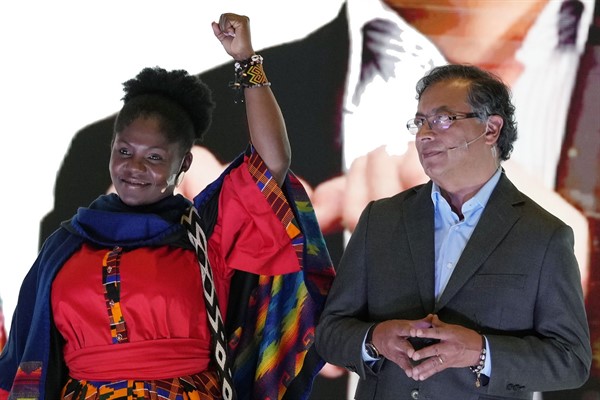TORIBIO, Colombia—At night, the hills around Toribio twinkle with the grow lights used to both illuminate and heat the marijuana plantations that dominate the local economy. Laid out in rectangular grids, these plots are a reminder that the fertile soils of this mountainous territory in Colombia’s southern province of Cauca are both a blessing and a curse. The local Nasa communities, key actors in the mass protests that rocked Colombia last year, cultivate a wide range of crops in an attempt to find alternatives to drug production, but marijuana and coca remain the mainstay of the local economy.
“We have Christmas lights all year round,” remarks Rugildo Mestizo, one of the indigenous leaders who preside over the local community. “We’re growing light bulbs now,” jokes another.
Their gallows humor is a reflection of their inability to shift the region’s violent political economy, which continues to claim the lives of community leaders who stand in its way. During Colombia’s decades-long conflict, Toribio suffered more attacks by the FARC guerrilla insurgency than any other town in Colombia, and today it seems a throwback to a previous era. The Dagoberto Ramos Front of the FARC, which didn’t demobilize following the 2016 peace deal signed with the government, controls the local production of both marijuana and coca, often in alliance with paramilitary drug gangs. Revolutionary slogans can still be seen scrawled on every traffic sign, and a banner slung low over the road celebrates the memory of a guerrilla leader killed recently in a confrontation with the army.

